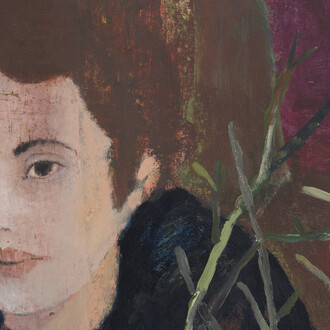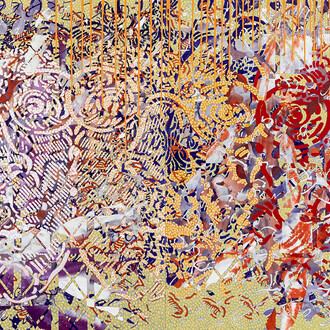Listening to Kusnir talk about his painting in the studio, I felt that he lived it as an organism — personified, searching for the movement of life, even in what seemed farthest from representation. I saw him arranging different elements like an opera: the entrances, the dialogues, the silences, and the pauses. In certain additions I saw an objection — even in the apparent casualness of an extra element that could disturb the whole, I heard a tension. One could imagine a painting as a site of repairs. Things are fixed, re-tuned, elements are set against each other after having fled the place where they seemed at rest. We run after this escape. We catch up with it or we don’t.
I could draw from this the whole of writing, even of painting itself, unless one finds in it the humor or mischief of changing a mise-en-place into a comedy of errors. The burlesque runs, always hurried, seems overwhelmed but masterfully organizes the conditions of its overflow.
I explained the particular light — strong yet torn — of a Kusnir painting through a sort of broad humor that was not joking but a humor synonymous with displacement. It was not the laugh at a chair’s feet that makes me laugh, nor a paradoxical situation of painting, nor the polished finish of an ornament in the bursting of a stain, but rather the quickness of objections and even the impertinences addressed to one’s own dispositions, as if being alive consisted of shaking oneself up.
(Text by Frédéric Valabrègue)















